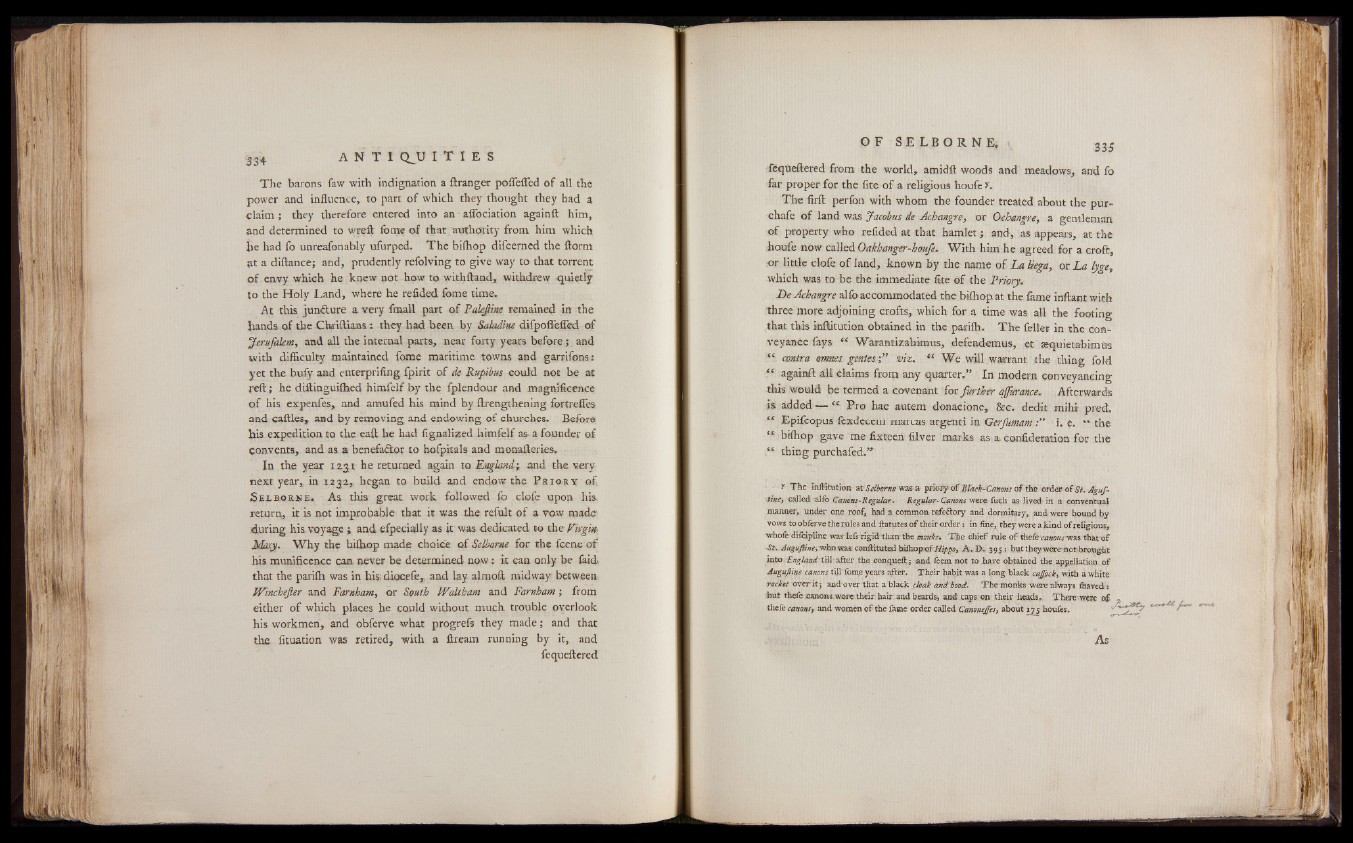
The barons faw with indignation a Granger pofieflfed of all the
power and influence, to part of which they thought they had a
claim ; they therefore entered into an aflociation againft him,
and determined to wreft feme of that authority from him which
he had fo unreafonably ufurped. The bilhop difcerned the ftorm
at a diftance; and, prudently refolving to give way to that torrent
of envy which he knew not how to witkftand, withdrew quietly
to the Holy Land, where he refided fame time.
At this juncture a very fmall part of Palefiine remained in the
hands of the Chriftiaus; they had been by Saladine difpofiefied of
jferujakm, and all the internal parts, near forty years before; and
with difficulty maintained fame maritime towns and garrifons:
yet the bufy and entevprifing fpirit of de Rupibus could not be at
reft; he diftinguifhed himfelf by the fplendour and magnificence
o f his expenfes, and anmufed his mind by ftrengthening fortrefles
and caftles, and by removing and endowing of churches. Before
his expedition to the ea£t he had fignalized himfelf as a founder of
convents, and as a benefaftor to hofpitals and monafteries.
In the year 1x3,1 he returned again to England-, and the very
next year, in 123a, began to build and endow the. P riory of
S el b o r n e . As this great work followed fo clofe upon his-
return, it is not improbable that it was the refnlt of a vow made'
during his voyage ; and efpecially as k was dedicated to the Pitg'm
Maxy. Why the bilhop made choice of Selbortie for the fcene of
his munificence cm never be determined now : it can only be laid
that the parifh was in his diocefe, and lay almofi; midway between
JVinchefier and Faruham, or South IValtham and Farnham; from
either of which places he could without much trouble overlook
his workmen, and obferve what progrefs they made; and that
the fituation was retired, with a ftream running by it, and
fequeftered
fequeftered from the world, amidft woods and meadows, and fo
far proper for the fite of a religious houfe 1.
The firft perfon with whom the founder treated about the pur-
chafe of land was Jacobus de Achangre, or Gcbangre, a gentleman
of property who refided at that hamlet; and, as appears, at the
houfe now called Oakhanger-hmfe. With him he agreed for a croft,
•or little clofe of land, known by the name of La Uega, or La lyge,
which was to be the immediate fife of the Priory.
De Achangre alfb accommodated the bifhop. at the fame inftant with
three more adjoining crofts, which for a time was all the footing
that this inftitution obtained in the parifh. The feller in the conveyance
fays “ Warantizabkmus, defendemus, et sequietabimus
“ contra ermtes gent e svi z . “ We will warrant the thing fold
“ againft all claims from any quarter,” In modem conveyancing
this would be termed a covenant for further ajfurance. Afterwards
is added — “ Pro hac autem donacione, &e. dedit mifai pred.
“ Epifcopus fexdeeem marcas argenti in Gerfumami . e. “ the
“ bifhop gave me fixteen filver marks as a confideration for the
“ thing purchafed.”
r The inftitution at Sethmte war a prioiy o f Black-Canons of the order o f St.Aguf-
tine, called alfo Canons-Regular. Regular-Canons were fuch as lived-in a conventual
manner, under one roof, had a common refe&ory and dormitary, and-were bound by
vows to obferve the rules and ftatutes of their order: in fine, they were a kind of religious,
whofe difcipline was-lefs-rigid- than the monks. The chief rule of thefe canons~vns that of
St. Augufiine, who was conftituted WkopKffrHfy>fio, A . B . 395: but they werenotbrougbt
into England' till: after the conqueA ; and feem not to have obtained the appellation of
Augufiine canons tillfome years after. Their habit was a long black cajfpck, with a white
rocket overit j ancbover that a black cloak andhood. The monks were always fliaved :
but thefe canons wore their hair and beards, and caps on their heads. There were of
thefe canonst and women of the fame order called Canonejfes, about 175 houfcs. f * *
As